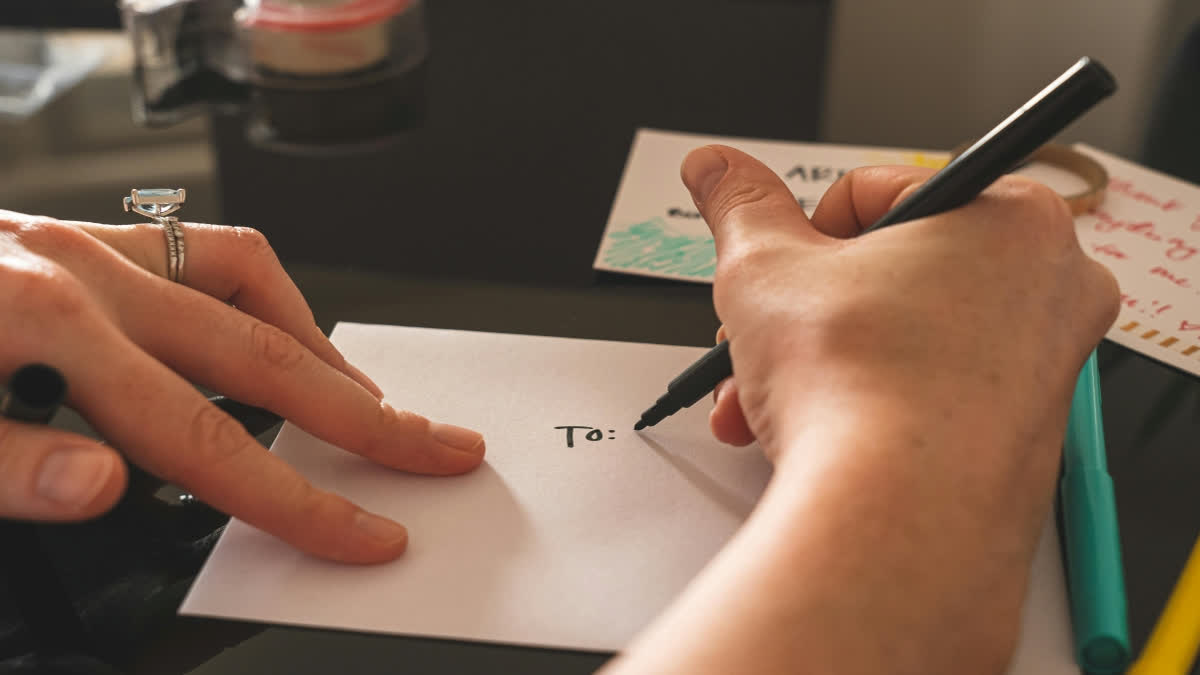Presently, letters are exclusively used in formal paperwork. In order to uphold the practice of writing letters in the future, it is important for us to write letters to our loved ones more frequently.
History of World Letter Writing Day:
World Letter Writing Day was established in 2014 by Richard Simpkin, an Australian photographer and author. Simpkin, known for his “Australian Legends” project in which he photographed and interviewed prominent Australians, was inspired by the power of handwritten letters he received from these notable figures.
Recognising the diminishing practice of letter writing in the digital age, he founded this day to promote the art of handwritten communication. The date, September 1st, was chosen to coincide with the beginning of spring in Australia, symbolising new beginnings and fresh connections.
Importance of National Letter Writing Day: Letter Writing Day commemorates and honours the traditional method of communication in the modern era of text and email. It allows you to reach out to people you have lost contact with and encourages thoughtful communication, as opposed to using instant messaging.
Below are a few excellent reasons for writing a letter:
- It's a considerate way to connect with the people you care about.
- The recipient could hold onto your letter for many years.
- Individuals who engage in writing thank-you notes experience increased feelings of happiness and contentment in their lives.
- It's an excellent method to enhance a friendship, marriage, or any other important relationship
- Assisting someone in comprehending your viewpoint or stance on a particular subject can be beneficial.
- This traditional form of communication will be appreciated by your older friends and relatives.
- Having attractive handwriting allows you to display your mastery in penmanship.
Letter writing has several unique qualities, including:
- Therapeutic: Writing therapeutic letters can serve as a cathartic outlet, allowing you to express your emotions, release negative thoughts, and cultivate gratitude.
- Tangible: Letters are tangible artifacts that can be held, felt, and read by future generations.
- Personal: There's something uniquely personal and human about the act of letter writing that technology simply can't replicate.
- Meaningful: Writing letters can offer a meaningful substitute for in-person visits, thereby strengthening the bonds of friendship and family.
- Timeless: The act of letter writing is timeless, transcending the constraints of time and space.
- Keepsake: Handwritten letters can become cherished keepsakes, serving as a constant reminder of the emotions shared between the sender and the recipient.
- Elicits emotions: The tactile experience of receiving a handwritten letter can stir a wide range of emotions, from nostalgia to joy.
The core of letters established a profound closeness as each one carried the unmistakable mark of its writer. All the pleasant aromas from your home and garden clippings can be included in a letter that is mailed out.
Digital media lacks the personal touch found in traditional methods, so take advantage of World Letter Writing Day to acknowledge the beauty of handwritten letters.
Letters have many purposes, including: Letters serve various functions, such as delivering updates, well-wishes, or particular details. Using letters can help establish connections with unfamiliar individuals and strengthen relationships with close ones.
Correspondence can offer a record of connections that can be cherished and revisited. The use of letters remains crucial for formal communication, including cover letters, bank reminders, and college acceptance letters.
Origin of Latter Writing: Throughout history, letters have journeyed from ancient India, Egypt, and Sumer, passing through Rome, Greece, and China, all the way to the present time. Ancient Indian texts refer to a messenger system, and it seems that there was a postal system in Egypt dating back to 2000 BCE.
Another claim in dispute is that Atossa, a Persian queen, may have written the first handwritten letter around 500 BCE. Although the letters she penned are no longer around, the tradition of writing for communication and documentation lives on.
Letter Writing in India: The East India Company established the current Indian postal system. Post offices were set up in Bombay, Madras and Calcutta from 1764 to 1766.
During Warren Hastings' time as governor general of India in 1774, 'copper tickets' were introduced in Patna, serving as prepaid token stamps valued at two annas. This gave the general public access to the postal service, allowing letters to be sent by individuals rather than just by government and business entities.
The Significance of Letters in Indian Literature: Indian literature contains numerous letters that offer important perspectives on the culture, emotions, and events of the period. In Sanskrit epics like the Ramayana and Mahabharata, letters play a key role in advancing the story and uncovering hidden truths.
These letters, frequently penned by individuals in moments of turmoil or profound thought, showcase the influence of written language in expressing feelings and untangling intricate scenarios. In Indian poetry, there is also a strong focus on the art of composing love letters, incorporating verses that convey desire, fervor, and eloquence.
How to celebrate World Letter Writing Day:
- Take a moment and think about the individuals who have a significant role in your life. Take out your high-quality paper, ensure you fill your pen with your preferred ink, ignite the fragrant candle, and begin writing down your thoughts. When you start writing, you will discover that the gradual speed of writing helps you carefully locate your thoughts, ensuring your emotions are as genuine as they can be. Letter Writing Day is a great time to reach out to old friends or relatives, expressing your feelings and reconnecting with loved ones.
- Purchase postcards from a nearby store, write brief messages on them, and mail to friends, family, and strangers.
- Craft your own set of stationery! Create playful patterns on cardstock paper, cut into shapes, assemble with glue, and embellish with stickers for a distinctive appearance. Your letters will now be noticeable.



